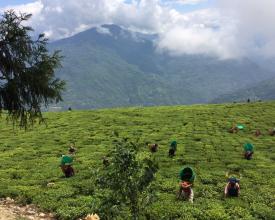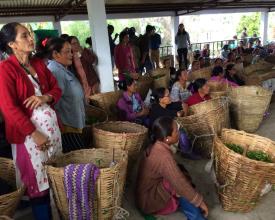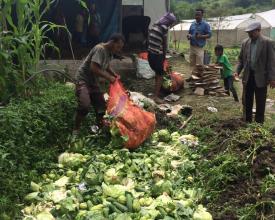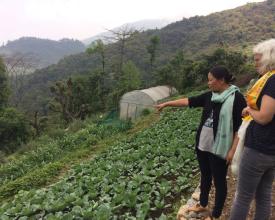
Sikkim’s State Policy on Organic Farming and Sikkim Organic Mission, India
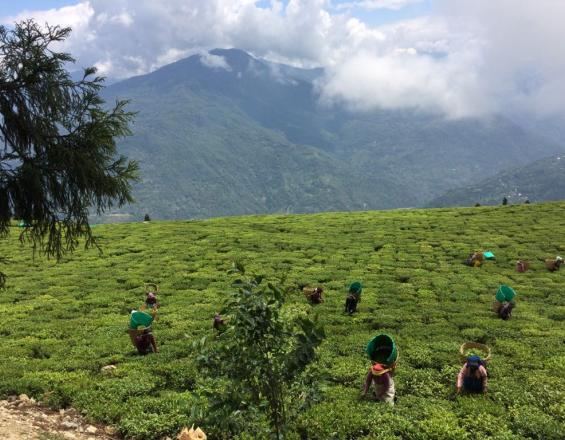
Sikkim is the first state in the world that is 100% organic: All of its farmland is certified organic. The policy implemented a phase-out of chemical fertilizers and pesticides, and achieved a total ban on sale and use of chemical pesticides in the state. The transition has benefitted more than 66,000 farming families.
At the same time, Sikkim’s approach reaches beyond organic production and has proved truly transformational for the state and its citizens. Embedded in its design are socioeconomic aspects such as consumption and market expansion, cultural aspects as well as health, education, rural development and sustainable tourism. Sikkim's tourism sector, for instance, benefited greatly from the new organic image: between 2014 and 2017, the number of tourists increased by over 50 per cent.
For their achievements, Sikkim’s policies were awarded the Future Policy Gold Award 2018, awarded by the World Future Council in partnership with the FAO and IFOAM – Organics International.
Context
Challenges addressed
Sikkim is a small Himalayan state located in Northeast India, covering a total geographical area of about 709,600 ha with around 610,577 local inhabitants (2011 Census). The state is listed as one of the world’s global biodiversity hotspots and its fragile, mountainous ecosystem requires sustainable farming practices to preserve its natural capital. Only about 10 per cent is farmed, whilst the rest is made up of forests, uncultivable land, cold desert and alpine region. The topography of the region is not suited for intensive industrial farming and the use of chemicals has always been relatively low, compared to other Indian states. Hence, Sikkim was a state where the impact of the Green Revolution was marginal. Political commitment to organic agriculture in Sikkim started in 2003. That year, the Chief Minister of Sikkim, H.E. Pawan Chamling, announced his vision for Sikkim to be India’s first organic state, accompanied by the creation of an action plan.
Location
Process
Summary of the process
A bold vision for an organic state and a clear roadmap (BB1) along with Piloting organic farming and launching the Sikkim Organic Mission (BB2) were key. As a second step, the goverment linked the conversion strategy with the gradual phase-out of synthetic inputs (BB3). Together, they build the Potential for a Transferable Model (BB4).
Building Blocks
Developing a vision and a clear roadmap towards 100% organic
When starting these policies, mainstreaming of organic and agroecological farming in the whole state was seen as a strategy to preserve the ecosystem of the state and the health of its citizens. The government was (and still is) convinced that this decision would deliver huge socioeconomic benefits, would help young people stay on the land, and would attract local and foreign sustainable tourism, while opening opportunities to reach premium organic markets.
Political commitment to support organic farming in Sikkim began in 2003. That year, the Chief Minister of Sikkim, H.E. Pawan Chamling, announced his vision for Sikkim to be India’s first organic state. In a historic declaration to the State Assembly in 2003, H.E. Chamling announced “a long awaited policy initiative of declaring Sikkim as a fully Organic State”. The 2003 declaration was accompanied by the creation of an action plan containing a variety of policy measures, including a gradual phase-out of synthetic inputs and the support for the production and use of organic fertilizers and organic seeds, coupled with capacity building for extension officers, farmers and young people.
Enabling factors
Back in 2003, there was still no clear agreement on how to progress towards the goal of a fully organic state. To move forward with this objective, in 2004, the government came up with a working policy and in August 2010, it launched the Sikkim Organic Mission to implement the action plan and policies related to organic farming in the state, with the target of converting the entire state into an organic one by the year 2015.
Lesson learned
The road map that clearly detailed all the measures necessary to achieve the target of becoming a fully organic state by 2015, was key, along with the setup of the Sikkim Organic Mission, to achieve the vision of Sikkim becoming the first 100% organic state in the world. The Sikkim Organic Mission – with its goal of becoming a fully organic state – is the first such far-sighted and visionary policy commitment by a state in India and indeed the world. By implementing this political strategy, Sikkim shows that it is taking all necessary measures to reverse the prevailing economic logic that favours forms of food production that fail to account for the contributions of nature. This action plan, together with its linked policies, is unique in its boldness. Remarkably, it allowed Sikkim to achieve its target of converting the entire state to organic agriculture by December 2015. This is the first time in history that a state set such an ambitious vision and also achieved it.
Piloting organic farming and launching Sikkim Organic Mission
Between 2003 and 2010, several pilot programmes supporting organic farming were launched, including the implementation of bio-villages where farmers were trained in organic farming practices and the production of organic inputs such as composting, organic fertilizers and organic pesticide using with local plants and cow urine. During this period, the government also invested substantially in the construction of vermicomposting pits. By 2009, more than 100 villages had benefited from these programmes, reaching 10,000 farmers in all four districts of the state.
Under the Sikkim Organic Mission, launched in 2010, a number of additional actions to support organic agriculture were implemented, including capacity building, organic seed and planting material production, setting up a seed and soil testing laboratory, operation of Sikkim Organic retail outlet at New Delhi, the inclusion of organic farming in school curricula, the conversion of the two state government farms at Nazitam and Mellidara, which became Organic Centres of Excellence for conducting organic farming demonstrations and trials, and the launch of three livelihood schools as training centres for unemployed youth.
Enabling factors
Activities aimed at supplying farmers with quality organic seeds included strengthening the seeds laboratory testing and processing facilities, and the development of a range of local organic seed development projects, such as contracting seed producers, government purchase and distribution, and establishing automated greenhouses for quality organic seedling production.
Lesson learned
In 2016, a National Organic Farming Research Institute (NOFRI) was established at Gangtok. The Institute promotes research and education on organic farming, and provides research and technological backstopping to organic production systems, not only for Sikkim but for the whole North East Hills Region of India.
Certification has also been a crucial part of the programme. Eighty per cent of the budget between 2010 and 2014 was used to build the capacity of farmers, rural service providers and certification bodies in organic farming practices, requirements and inspections, and to support farmers in acquiring certification, mainly through the Internal Control System.
Linking the conversion strategy with the gradual phase-out of synthetic inputs
One of the strongest components of the plan was to couple the conversion strategy with the gradual phase-out of synthetic inputs. Starting in 2005, the government decided to stop receiving its chemical fertilizer quota from the Government of India and began to gradually reduce subsidies on chemical fertilizers and pesticides at a rate of 10 per cent every year to make them costlier and discourage their purchase. In this way, subsidies were phased-out by 2007-2008. Another measure was to start closing down all sale points and other outlets supplying farmers with synthetic inputs. The state government also started to restrict the import of synthetic inputs and, finally, in 2014 the Sikkim Agricultural, Horticultural Inputs and Livestock Feed Regulation Act was passed, which prohibits the import of any chemical inputs for agriculture and horticulture, and as such constitutes a total ban on the sale and use of chemical pesticides in the state.
During the period between 2010 and 2014, the government earmarked a budget of EUR 6.75 million to support the implementation of the Organic Mission. Recently, the Organic Mission has received also support from central Government schemes, such as the National Mission for Sustainable Agriculture (NMSA).
Enabling factors
- The state government showed strong political will and policy consistency, along with well-defined targets and implementation plans, which can be adopted by other states.
- The state government’s strategy to phase out chemical fertilizers was implemented gradually, but firmly. It was a bold decision, backed up by substantial measures to build real sustainable alternatives.
Lesson learned
Since the policy’s introduction, resolute efforts to halt use of chemicals in the fields and to convert all the national agricultural land to organic practices were implemented by the regional government and the people at large. Measures include the implementation of bio-villages, where farmers are trained in organic farming practices and the production of on-farm organic inputs, such as composting, organic fertilizers and organic pesticides, using with locally available plant materials and cow urine. Mandatory requirements were combined with support and incentives, and by providing sustainable alternatives, the implementation of Sikkim’s strategy became successful.
Potential as a Transferable Model
Despite being a small state, Sikkim’s visionary leadership is receiving extensive attention in India and appears destined to reverberate worldwide. Neighbouring countries and states show high interest in replicating and many other countries, especially in Asia, invited Sikkim to exchange its experiences.
Bhutan has already set out a new road map towards becoming a 100 per cent organic state by 2023, and now a number of Indian states are interested in following the wish of the India’s Prime Minister to see the whole of North India converting to organic agriculture. At the beginning of 2018, Uttakarand became the second Indian state to promise broader support to organic farming for its 1.6 million farmers, announcing an action plan backed by approximately EUR 189 million of federal funding for the next three years. Organic agriculture can help India to achieve its own sustainable development goals, including doubling the income of rural farmers by 2022, if more Indian states adopt Sikkim’s model of organic farming.
Enabling factors
- Political commitment was key. Sikkimese political support to organic farming in Sikkim began in 2003 and was consolidated in 2010 with the design of the Sikkim Organic Mission.
- Consistency and perseverance: The goal was reached within just 12 years.
Lesson learned
It was critical to have full political support and to design a road map that clearly detailed all the measures necessary to achieve the target of becoming a fully organic state by 2015.
Impacts
Sikkim’s experience has been largely positive. In the first place, the state government showed strong political will and policy consistency, along with well-defined targets and implementation plans. The state government’s strategy to phase out chemical fertilizers was implemented gradually, but firmly, backed up by substantial measures to build real sustainable alternatives. Farmers and citizens are proud of this policy and keep giving it political support.
Today, more than 66,000 farming families, managing more than 76,000 ha of land, benefited from the transition. These farming communities have gained a good level of understanding of organic farming practices. To improve soil health management, the government has provided support to farmers to run a total of 40,000 soil tests per year. Furthermore, the three livelihood schools for organic farming have educated 836 unemployed people, 695 of whom are now employed as field supervisors.
At the same time, Sikkim’s approach reaches beyond organic production and has proved truly transformational for the state and its citizens. Embedded in its design are socioeconomic aspects such as consumption and market expansion, cultural aspects as well as health, education, rural development and sustainable tourism. Thanks to Sikkim's organic image, between 2014 and 2017 the number of tourists increased by over 50 per cent.
Beneficiaries
The main beneficiaries are the more than 66,000 Sikkimese farming families, managing more than 76,000 ha of land. Through the provision of healthy organic food, the policy benefits the general population. Tourists now enjoying Sikkim also benefited.
Sustainable Development Goals
Story
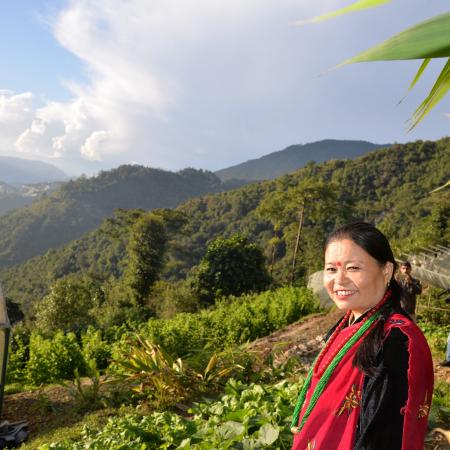
I am living with my family in the village of Bul, which is situated high up in the mountains in Sikkim, India. My family’s name is Mala Sherpa. We are in my village a total 285 families that grow fruits, vegetables and flowers. When visitors come to Bul, we love to prepare a big party for them. We welcome them with orange yellow wreaths of marigold and colourful silk shawls, lots of music, songs and dance, and of course good and healthy food. We love to offer dishes with potatoes, vegetables and grilled chicken or yak meat, alongside Chang, a sort of light wine which is very popular drink in Sikkim.
My family owns an organic demonstration farm. On our farm live three generations, which is rather typical for Sikkim. Besides my aged grandparents and my husband, also the young generation pitches in. We do not really have a problem with missing family succession, which seems to be a big issue in many other states of India. Because thanks to positive future perspectives for farms in Sikkim and we parents being successful and proud farmers, our youth remains in the countryside and plans on becoming farmers as well.
On our farm we have cows and goats. Our terrace fields are narrow. To plow our fields with the small cow plough we own, my husband has to be highly concentrated. We are very proud how surefooted our cows are, they turn on the spot. We have also compost heaps and barrels with plant-based preparations – all are well-labelled, because we are a demonstration farm and act as a learning centre for all farmers in Bul. On our fields we grow potatoes, kale, carrots, leek, garlic, ginger and flowers. However, we earn most with large cardamom, for which Sikkim is the world’s most important producer. I personally are much in love with our flower plots, which also contribute significantly to our income. The change towards organic agriculture was highly important for us – it meant for my family a good income and a secure future. In my view Sikkim’s organic policies should be generalized and spread to India and the whole world.

